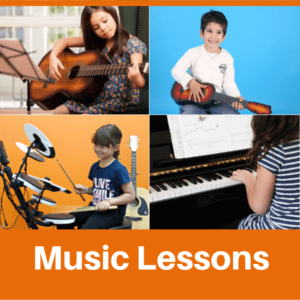
Summer is a great time to get outdoors and enjoy the sunny weather while we can! Children are constantly learning and there are many outdoor activities that allow them to have fun while engaging with the world around them. Although kids are naturally curious and can direct their own learning by exploring the outdoors and asking questions, there are many activities that family members can introduce and facilitate to encourage students to think outside the box. One way to do this is with a sound walk!
A sound walk can turn any regular walk into a fun, engaging learning activity. At the beginning of your walk, or before your walk, you can talk about different sounds we hear in the world around us. For example, there are different instruments, sounds we can make with our bodies such as singing or clapping, sounds animals make, sounds vehicles make, and more! Then, have young learners observe the sounds around them while you start out on your walk.
There are a variety of ways you can facilitate a sound walk – here are some ideas:
- Play sound bingo! Have a bingo sheet with a variety of sounds and try to listen for these different sounds while walking around the neighbourhood or sitting in a park. Here is an example I made – you can also make your own with Bingo Baker. Depending on the level of your children, you can even use pictures instead of words and customize the amount of squares. Older students may also enjoy drawing their own bingo cards!
- Make a list – this is a great opportunity for students to practice their writing and organizational skills by making their own list on a piece of paper or small whiteboard. If appropriate, you can also turn it into a game to see who can write down the most sounds!
- Have a conversation! This activity can also be very informal and relaxed. Ask students questions such as “What sounds do you hear right now?” or “How do the sounds change when we go from the busy city street into the park?”
- Create a sound map of your walk. Have students think about, talk about, or write down sounds they hear while outside. Then, have them create a map of their walk. This map may look different depending on student level and interest. Older students may enjoy drawing a map of the neighbourhood or park and then drawing different symbols or shapes for different sounds that they heard in different areas (e.g. a squiggly line for a bird chirping or a zig-zag line for a construction machine). Younger students could simply be given a prompt to “draw the different sounds you heard” so that they can create a more abstract representation of their experience.
- Simply enjoy the sounds. A sound walk can also be a great way to encourage mindfulness. Students can be encouraged to take the time to listen to the sounds around them and be in the moment while taking a break from talking to others. After the walk, you could talk about how they felt while listening to the sounds and if they noticed anything interesting along the way.
The great thing about this activity is that it can be used again and again in any setting and at any time of year. You will hear new and exciting sounds each time, and it can also be a great chance for kids to think about the different sounds they hear depending on factors such as time of day, time of year, or setting. For example, you may hear snow shovelling in winter, birds chirping in summer, and leaves crunching in fall. No matter the time of year, nature sound walks will allow students to have fun, stay active, and develop important skills such as using their senses to identify things around them and communicating about what they hear.
Have fun outside!
For more fun Outside Activities and Oak Learners fun check us out on Instagram and Pinterest
Looking for more? Check out our Outside Activities Archives
Or, sign up for our newsletter below for school updates.
Get updates on new classes, hosted events, and more.











